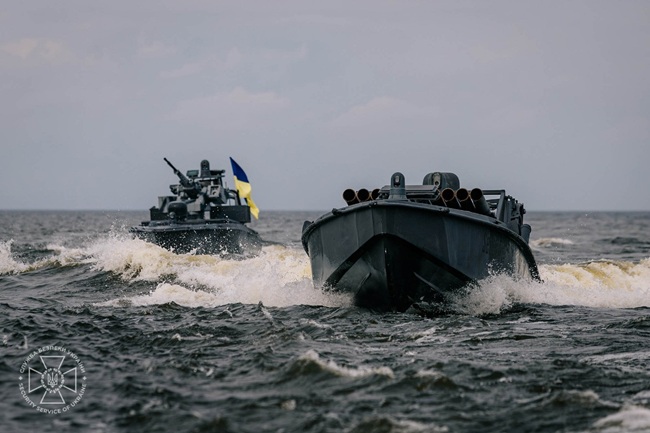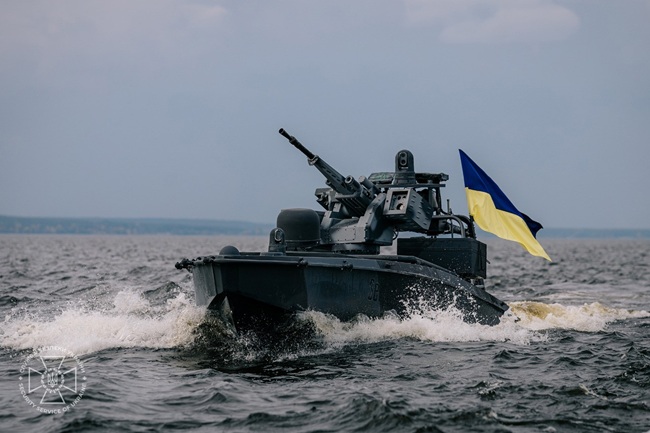
The Ukrainian Security Service (SBU) has unveiled two new variants of its SEA BABY Unmanned Surface Vessel (USV).
One version is equipped with a 10-tube Multiple Launch Rocket System (MLRS) for 122 mm GRAD rockets, primarily intended for strikes against coastal targets or slow-moving and anchored vessels. The rockets have a maximum range of around 40 km, but dispersion — worsened by the platform’s natural motion and the absence of a stabilized firing system — is significant, making precision bombardment impossible.

The second variant features a stabilized Remote Weapon Station (RWS) mounting a 12.7 mm machine gun, paired with a sophisticated optronic system for target detection, recognition, and automatic tracking. Combined with a ballistic computer, this enables accurate engagement of moving targets. This version is likely designed to serve as a point-defense or anti-aircraft unit within a USV strike formation.

According to the SBU, both variants participated in the 3 June 2025 attack on the Kerch Bridge, which connects occupied Crimea to Russia’s Krasnodar region. However, the actual damage was limited, and evidence suggests the strike was instead carried out using explosive charges placed by divers or underwater drones.
Among other notable upgrades are a new propulsion system and a new navigation and control suite. The SEA BABY remains remotely piloted via a low-latency satellite link, rather than fully autonomous. Compared to early models, the operational range has tripled — from 300 to 900 nautical miles (550–1,660 km) — and the payload capacity has increased to nearly 2 tons.
Since late 2023, SEA BABY USVs have evolved from traditional kamikaze drones into multi-role platforms, capable of carrying a wide range of armaments. Configurations have included: infrared-guided R-73 (AA-11 Archer) surface-to-air missiles, 2 MN-103 MANTA naval mines, 6 RPV-16 thermobaric RPGs with an effective range of 300 m (and up to 1,000 m for area fire), or six 122 mm rockets.
A SEA BABY armed with a stabilized 14.5 mm KPVT heavy machine gun was already used in December 2024 during a skirmish against a Russian helicopter. That system, however, employed a much simpler targeting suite, lacking autonomous detection and tracking capabilities. The same drone — damaged in combat — has since been displayed outside the Ukrainian Museum of the History of the Second World War.
Ukraine has also developed several variants of its other well-known USV, the MAGURA V5: initially a kamikaze drone, followed by the V6, armed with R-73 air-to-air missiles; the V7, equipped with AIM-9M SIDEWINDER missiles; and finally a “drone-carrier” version capable of deploying four FPV attack UAVs from a dedicated internal bay.
Throughout the war, USV operations have enabled Ukraine to strike 11 Russian naval vessels, and reportedly shoot down at least 2 Su-30 fighters and 1 Mi-8 helicopter, forcing nearly the entire Russian Black Sea Fleet to relocate from Sevastopol (Crimea) to Novorossiysk — thereby securing a safer maritime corridor for grain exports.
(Photo: SBU)








.png)
